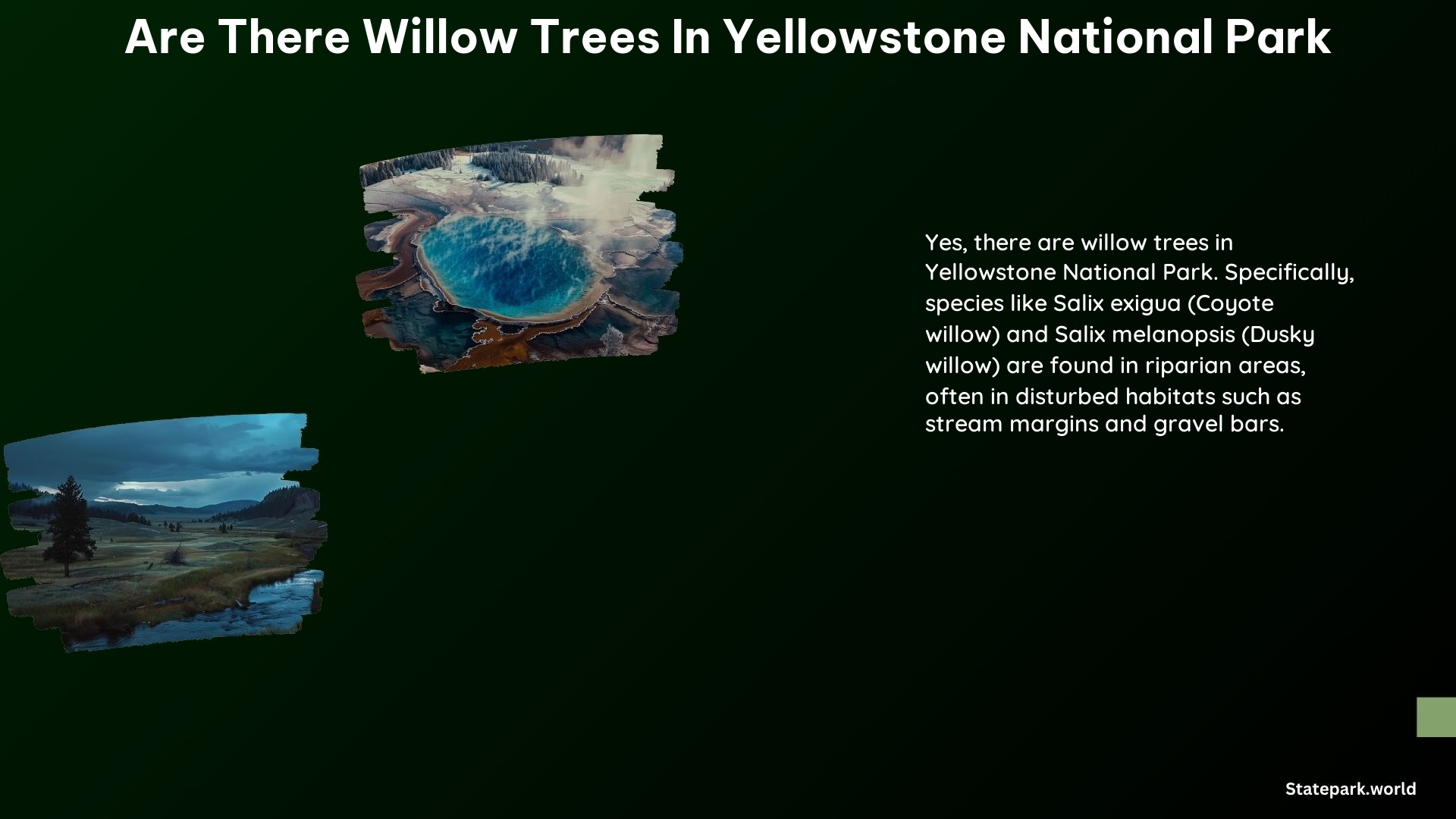Yes, there are willow trees in Yellowstone National Park. The park is home to several species of willows, including the “Coyote willow” (Salix exigua) and the “Dusky willow” (Salix melanopsis). These willows are found primarily in riparian areas, such as stream margins and gravel bars, and are often heavily browsed by animals.
Current Status of Willow Trees in Yellowstone National Park
The current status of willow trees in Yellowstone National Park is one of recovery. Following the reintroduction of wolves in 1995, the reduction in elk numbers has allowed willows to grow taller in many areas. A study by Oregon State University found that willows have increased in height and cover in response to the reduction in browsing by elk. The study compared data from three time periods and confirmed that willows have indeed recovered in some areas, particularly along streams.
Initiatives to Restore Willow Trees in Yellowstone National Park

There are ongoing efforts to restore willow trees in Yellowstone National Park. The park’s vegetation management focuses on minimizing human-caused impacts on native plant communities. This includes restoring native vegetation and managing invasive species that can displace native plants. Additionally, research projects are being conducted to better understand the dynamics of willow recovery and the role of predators like wolves in maintaining a healthy ecosystem.
Key Facts and Figures
| Fact | Details |
|---|---|
| Willow Species | Coyote willow (Salix exigua) and Dusky willow (Salix melanopsis) are common in Yellowstone. |
| Reintroduction of Wolves | Wolves were reintroduced to Yellowstone in 1995, leading to a decrease in elk numbers and subsequent recovery of willows. |
| Elk Population | Elk numbers in northern Yellowstone have declined from nearly 20,000 in 1995 to 4,149 in 2019. |
| Willow Height | Willows in stream sites have increased significantly, exceeding 200 centimeters (6 feet) in height, making them inaccessible to elk. |
| Beaver Role | Beavers play a crucial role in creating slow-moving streams that allow willows to grow, but their numbers have declined due to the loss of willows. |
The recovery of willow trees in Yellowstone National Park is a testament to the resilience of the ecosystem and the importance of predator-prey dynamics. The reintroduction of wolves has had a cascading effect, allowing willows to thrive and providing habitat for other species. Ongoing efforts to restore and manage the park’s native vegetation will continue to play a crucial role in maintaining the ecological balance of Yellowstone.
References
- https://today.oregonstate.edu/news/reintroduction-wolves-tied-return-tall-willows-yellowstone-national-park
- https://new.nsf.gov/news/yellowstone-ecosystem-needs-wolves-willows-elk
- https://www.nps.gov/yell/learn/nature/plants.htm
- https://www.yellowstoneecology.com/research/willow_key.html
- https://wildlife.org/willows-grow-where-the-wolves-prowl-in-yellowstone/
